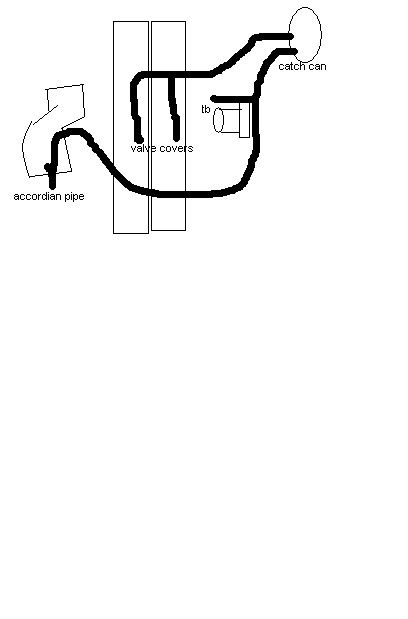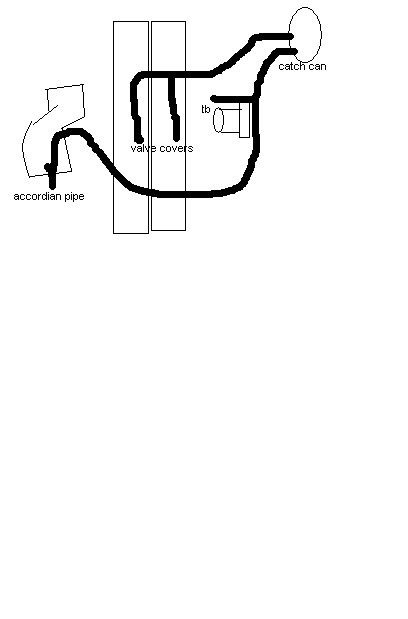I've done my searching homework on this topic and I'm not sure if I'm missing something obvious here. The majority of the threads on this subject all say people are setting up catch cans incorrectly on the 7M and that the best setup is keeping it stock. There are 3 attachment points on the stock pcv system (valve covers, TB, and Accordian hose). If you maintain all 3 points and insert a catch can in between the stock PCV piping and the accordian hose.......... how could anything be effected negatively? (FYI. The catch can is a cusco and has 2 ports.)
It appears to me like the majority of people do this, BUT they disconnect the TB vacuum source by directly connecting the catch can via hoses or N/A PCV pipe and then capping the TB vacuum.
1. Would this setup (see picture) be an improvement from stock? Mind - I do have some minor blow by.
2. I have one available mounting place for my catch can directly (touching) the windshield washer fluid reservoir. I know the ideal location is on intake side by the master clutch slave... but there is no room there. It appears this location by the air filter would be a pretty cool (no pun intended) spot to put it compared to sitting directly next to the engine (either side) and/or turbo. Will this work as an alternative (next best thing)?
It appears to me like the majority of people do this, BUT they disconnect the TB vacuum source by directly connecting the catch can via hoses or N/A PCV pipe and then capping the TB vacuum.
1. Would this setup (see picture) be an improvement from stock? Mind - I do have some minor blow by.
2. I have one available mounting place for my catch can directly (touching) the windshield washer fluid reservoir. I know the ideal location is on intake side by the master clutch slave... but there is no room there. It appears this location by the air filter would be a pretty cool (no pun intended) spot to put it compared to sitting directly next to the engine (either side) and/or turbo. Will this work as an alternative (next best thing)?
Attachments
Last edited:






